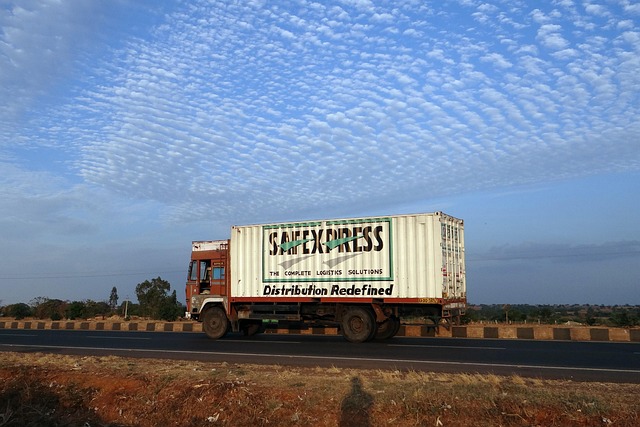Looking to register your car in California? This comprehensive guide walks you through the entire process, from understanding eligibility requirements to obtaining your license plate. Before visiting the DMV, gather essential documents and prepare your vehicle’s VIN for verification using a reliable DMV vin verifier. We’ll detail each step, ensuring a smooth experience. By following our straightforward instructions, you’ll be on the road in no time with a registered vehicle.
- Understand Eligibility Requirements for Car Registration
- Gather Necessary Documents Before Visiting DMV
- Prepare Your Vehicle's VIN for Verification
- Follow Steps to Register Your Car at DMV
- Obtain License Plate and Proof of Registration
Understand Eligibility Requirements for Car Registration

Before you begin the registration process, it’s crucial to understand the eligibility requirements set by the California Department of Motor Vehicles (DMV). To register your car, your vehicle must meet certain criteria. One essential step is ensuring that the vehicle has passed a recent safety inspection, which includes a valid and accurate Vehicle Identification Number (VIN) inspection. The DMV recommends using a trusted DMV vin verifier to check this information.
Additionally, you’ll need to provide proof of ownership, which can be done through a title or a bill of sale. If you’re importing a vehicle, there might be specific requirements for documentation and temporary registration permits. Using a mobile vin verification service can help streamline this process by providing quick access to VIN data, ensuring that your car is eligible for registration with the California DMV.
Gather Necessary Documents Before Visiting DMV

Before visiting the DMV to register your car in California, it’s crucial to gather all necessary documents. This process involves several key steps and papers to ensure a smooth registration experience. Firstly, obtain your vehicle’s Certificate of Title (if applicable), which can often be found with your purchase paperwork or through previous owners. Additionally, you’ll need to present a valid driver’s license or state ID card, proof of insurance, and a current registration (if transferring from another state).
Another essential tool for this process is a reliable DMV VIN verifier. Using a mobile VIN verifier or mobile VIN inspection can streamline the verification process. Many apps and services now allow you to quickly check your vehicle’s history and identify any potential issues, making it easier to navigate the registration requirements. This step is vital to ensuring your car meets all safety and legal standards before completing the registration formalities at the DMV.
Prepare Your Vehicle's VIN for Verification

Before registering your car in California, it’s crucial to ensure that your vehicle’s Vehicle Identification Number (VIN) is prepared for verification by the Department of Motor Vehicles (DMV). The VIN is a unique code that identifies your car and plays a vital role in the registration process. Start by locating the VIN on your vehicle—it’s typically found on the driver-side door frame or the engine compartment. Write it down accurately, as you’ll need to provide this information during the registration.
For convenience, many opt for a mobile VIN verifier app, which allows you to capture and submit the VIN digitally. This method streamlines the initial verification step, making it easier to navigate the California car registration process. Alternatively, you can conduct a vin inspection at a local service center or dealership to ensure your vehicle’s history is clean and accurate before proceeding with registration.
Follow Steps to Register Your Car at DMV

To register your car in California, follow these straightforward steps at your nearest Department of Motor Vehicles (DMV) office. First, gather all necessary documents, including your vehicle’s registration from the previous state, proof of insurance, and a completed Title Application form. Next, verify the Vehicle Identification Number (VIN) using a trusted DMV vin verifier to ensure the vehicle matches the details on the title. This step is crucial to prevent fraud and ensure the accuracy of the registration process.
Once your VIN has been verified, you can proceed with the registration. Present your documents at the DMV, where an agent will review them and conduct a thorough inspection of your car. They may also require additional information or fees, so be prepared to provide everything needed for a seamless mobile vin verification and successful car registration in California.
Obtain License Plate and Proof of Registration

After completing your vehicle’s registration online or at a California DMV office, it’s time to secure your license plate and official proof of registration. This crucial step ensures that your vehicle is legally recognized on California roads. Begin by obtaining your license plates from a designated DMV location or an authorized provider. These plates will display your unique Vehicle Identification Number (VIN), which serves as a permanent identifier for your car.
Additionally, you’ll receive official proof of registration, typically a paper document or digital certificate. Keep this documentation handy, as it’s essential during vehicle transactions and for proof of insurance checks. Consider using a mobile VIN verifier to confirm your VIN independently if needed, ensuring the accuracy of your vehicle’s information. This modern convenience allows for a quick and easy vin inspection right from your smartphone.
Registering a car in California is a straightforward process that requires understanding the eligibility criteria, gathering the right documents, and following the steps outlined in this guide. By ensuring your vehicle’s Vehicle Identification Number (VIN) is prepared for verification through a DMV vin verifier, you can efficiently complete the registration at your local DMV. This ensures a smooth transition into California’s automotive regulations, allowing you to hit the roads legally and enjoy your new vehicle.



